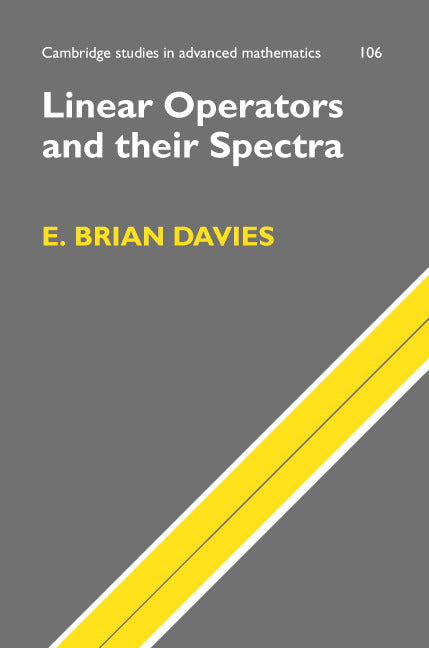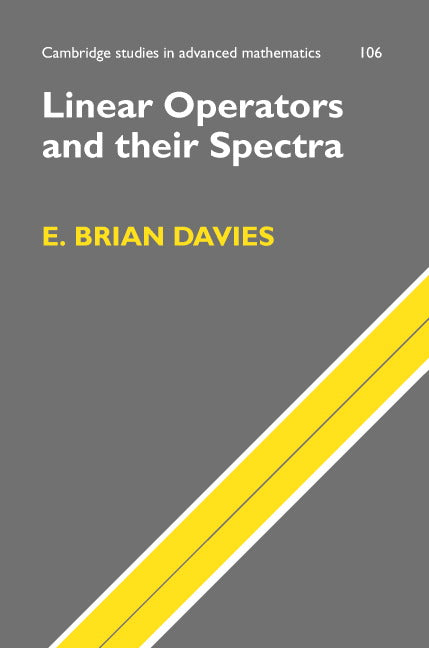Freshly Printed - allow 8 days lead
Couldn't load pickup availability
Linear Operators and their Spectra
Authoritative text presenting a broad view of the spectral theory of non-self-adjoint linear operators.
E. Brian Davies (Author)
9780521866293, Cambridge University Press
Hardback, published 26 April 2007
464 pages, 15 b/w illus. 274 exercises
23.5 x 15.8 x 2.7 cm, 0.768 kg
'One will look in vain for the notions of pseudospectrum, hull and numerical range in standard functional analysis texts, so Davies has done us a great service by explaining them through beautiful theorems and examples. More generally, his book is the first to offer a comprehensive survey of the spectral theory of non-self-adjoint operators, including both 'classical' and 'cutting edge' results, showing that this theory holds as much promise as the self-adjoint theory in both foundations and application. The scope of the book is truly enormous and is only partly reflected by listing the chapter titles … [a] beautiful volume, which has no competitors.' The Mathematical Intelligencer
This wide ranging but self-contained account of the spectral theory of non-self-adjoint linear operators is ideal for postgraduate students and researchers, and contains many illustrative examples and exercises. Fredholm theory, Hilbert-Schmidt and trace class operators are discussed, as are one-parameter semigroups and perturbations of their generators. Two chapters are devoted to using these tools to analyze Markov semigroups. The text also provides a thorough account of the new theory of pseudospectra, and presents the recent analysis by the author and Barry Simon of the form of the pseudospectra at the boundary of the numerical range. This was a key ingredient in the determination of properties of the zeros of certain orthogonal polynomials on the unit circle. Finally, two methods, both very recent, for obtaining bounds on the eigenvalues of non-self-adjoint Schrodinger operators are described. The text concludes with a description of the surprising spectral properties of the non-self-adjoint harmonic oscillator.
Preface
1. Elementary operator theory
2. Function spaces
3. Fourier transforms and bases
4. Intermediate operator theory
5. Operators on Hilbert space
6. One-parameter semigroups
7. Special classes of semigroup
8. Resolvents and generators
9. Quantitative bounds on operators
10. Quantitative bounds on semigroups
11. Perturbation theory
12. Markov chains and graphs
13. Positive semigroups
14. NSA Schrödinger operators.
Subject Areas: Calculus & mathematical analysis [PBK]


